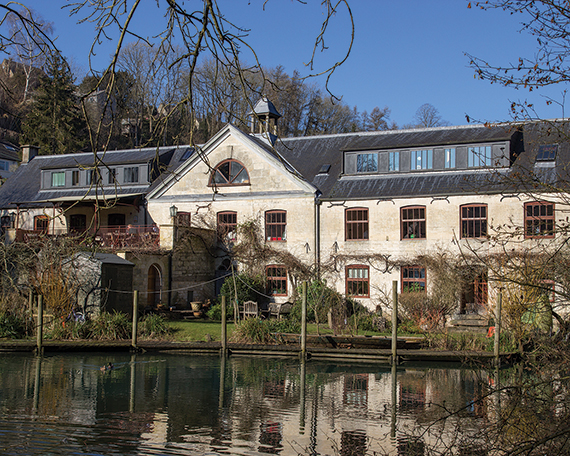Paul Mountain discusses the options for keeping heritage assets from crumbling
There are about 5,500 buildings and structures noted on Historic England’s 2015 Heritage at Risk register. These are assets which the state has declared as having historic or cultural significance (listed buildings or scheduled monuments, or both) and which are in such state of neglect that they will, sooner rather than later, fall down, unless ways are found of stabilising and restoring them.
A quick skim read of the register for any region reveals a fascinating collection of structures, sometimes weird, often wonderful, most presenting a number of problems and opportunities. Some might be beyond saving. But for those that can be repaired, the positive impacts on the local economy – on jobs, skills, inward investment in industry, educational attainment, and community cohesion – can be immense.
Different structures and environments require different solutions. A fairly small sum in grant support and a reliable team of volunteers might do it for a medieval chapel on a hillside in Herefordshire. At the other extreme, a big complex of disused industrial buildings, which a few generations ago employed thousands of people and shaped the development of an entire city, may cost millions to regenerate.
But of course, the more serious the neglect, the more expensive the restoration, and the more difficult it becomes to find viable end uses. So what can be done?
Heritage Lottery Fund
In all cases, uses have to be found which make restoration socially and economically viable. With severe cutbacks in public spending, particularly in the realm of local government, the Heritage Lottery Fund (“HLF”) is an increasingly important source of funding for mixed-use schemes as well as for visitor attractions and destinations. Heritage, culture and tourism are big business and are increasingly seen as central to a locality’s prosperity, while the overlap with education is clear. Depending on their scale, heritage projects can offer invaluable opportunities for schools, colleges and universities to enrich their teaching activities and academic research, and to engage with the wider community. The HLF recognises this, and collaborative, locally-based working is encouraged. Rates of intervention can be as high as 90%, but in such cases a very strong economic and cultural case will be needed.
Different funding streams are available for different types of project, but for capital works there are essentially two alternatives: heritage grants, allowing full cost recovery on projects where a strong case can be made for a major visitor destination; and heritage enterprise funding, for more commercial projects, which is designed to bridge the difference between the cost of restoration and the end-use value created through regeneration – the so-called conservation deficit. Decisions on capital grants for projects from £2m to £5m are made at a regional level every couple of months; and, above £5m, at a national level every quarter.
The power of people
Whether a project is in need of a heritage grant or heritage enterprise funding, a community trust or non-profit body needs to be formed to stake its claim to ownership or stewardship of the asset (unless it is already owned by an eligible body such as a local authority or an educational institution). Committed and capable people will be needed to make the first stage case for the restoration – archaeologists, historians, businesspeople, community campaigners and marketeers will all be in demand. A lot of work will be unpaid in the early stages. But the great advantage of success with a stage-one grant for project development costs is that it gives community groups the power to engage on their own terms with businesses, cultural organisations, local authorities and other funding bodies, on how the project will contribute to a better quality of life for local people and to the local economy.
Success depends on how projects are conceived at the outset, in terms of the visible, aesthetic impact and the quality of the offering. Despite the cuts in public spending, matched capital funding support is available in certain areas. Local enterprise partnerships (“LEPs”) are one source, especially where they are looking for good quality projects in which to invest growth funds.
High-profile abandoned buildings of local significance create the feeling that something must be done, and a heritage-based scheme can boost the local economy and create jobs. And while it may need revenue support – it might not “wash its hands and face” for quite a few years – it can create a honeypot effect by providing a high-quality environment to attract visitors, new businesses and new residents. The key therefore is to find a development strategy and an ownership structure which creates the potential for cross-subsidy into the longer term. This requires patient partnership working between private, public and third sectors around a shared vision.
 Case study: Ruskin Mill Trust
Case study: Ruskin Mill Trust
Ruskin Mill Trust is a group of independent colleges and registered charities which provide academic and practical education to young people with learning or behavioural difficulties. Ruskin also has a track record of turning old industrial buildings into contemporary centres of specialist education, with incubator space for artisans and small businesses.
Its estate comprises a former wool mill in Painswick; a cutlery factory in Sheffield; a glassworks in Stourbridge; and a jewellery workshop in Hockley, Birmingham. Each was regenerated to recapture and conserve its industrial history, while providing a contemporary and safe learning environment.
Of the four campuses, Freeman College (Sheffield) and Glasshouse College (Stourbridge) were part-funded with heritage and regeneration grants from HLF, the Arts Council and the Black Country LEP along with EU funding; while Argent College (Hockley) is under development with support from the Education Funding Authority and the Birmingham LEP, and an HLF grant is under consideration.
Paul Mountain is a consultant solicitor with Trowers & Hamlins







